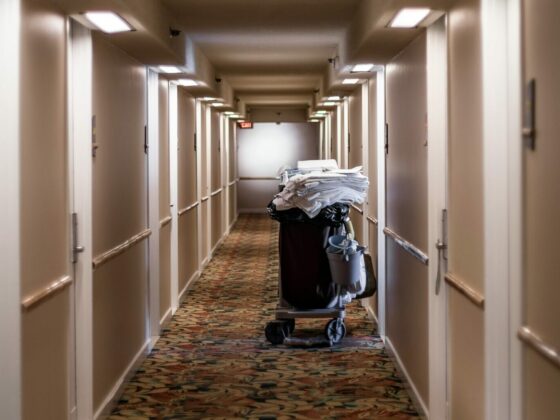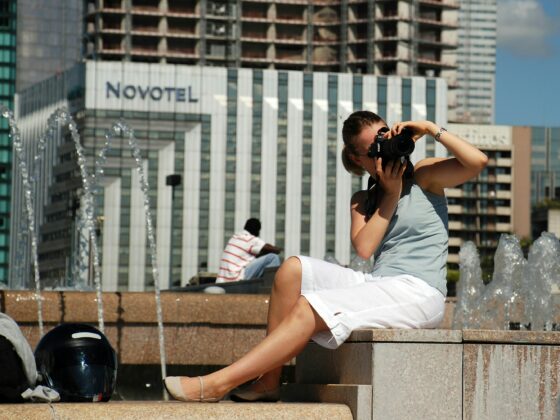
After many years traveling across Southeast Asia studying visionary resorts, such as Alila, Six Senses, Soneva or Banyan Tree, I realized luxury wasn’t about opulence or accumulation — it was about presence. It was slower, quieter and far more connected to life itself.
Digging deeper into the roots of this difference —meaning the spiritual, ecological and cultural DNA— I’ve learnt something that has since redefined my life’s work: Luxury, like the Earth, was asking to be reborn and use its power for good. Today, the new frontier of luxury is not about perfection — it’s about regeneration.
Regenerative Luxury goes beyond sustainability, seeking to actively restore, revitalize and re-enchant the natural and human systems we interact with. This state of mind not only protects the environment but also enhances it, allowing every guest to leave renewed and transformed while generating a measurable positive impact through every experience.
Regenerative luxury
The emerging paradigm is regenerative luxury: a form of luxury that not only minimizes harm but actively restores ecosystems, cultures and human wellbeing. It’s not a trend or a marketing term—it’s a transformation of consciousness, a philosophy of renewal, a science of vitality and a profound shift in how we define value.
In the regenerative era, luxury is no longer about owning more but about belonging to something greater: to the cycles of nature, to the wisdom of place and to the legacy of care we leave behind.
From sustainability to regeneration
For years, the hospitality sector has spoken the language of sustainability—carbon reduction, efficiency, certifications. These are essential foundations, but they are not enough. Sustainability seeks to do “less harm” to sustain the current state of things. Regeneration seeks something more ambitious: to create the conditions for life to thrive again.
The difference is not semantic; it’s systemic. While sustainability aims to maintain balance, regeneration aims to restore vitality; while sustainability measures footprints, regeneration measures handprints, meaning the positive imprints we leave on ecosystems and societies.
Regenerative luxury reframes value from scarcity to abundance, from extraction to reciprocity, from perfection to co-evolution.
Science of systems, not silos
Regenerative Luxury is inspired by living systems, understanding that hotels, guests and destinations are part of a single, interdependent web of life. This approach draws from disciplines such as biomimicry, ecological, bioregional design and wellbeing science and integrates frameworks like UNWTO Measuring Sustainable Tourism Framework and UN SDG, which help define the science of regeneration. However, art lies in how we bring them to life through hospitality.
This framework is built upon five interconnected pillars:
- Nature as co-designer: Architecture, materials and energy systems designed in harmony with local ecosystems.
- Community as partner: Local cultures and economies as beneficiaries and co-creators, not backdrops.
- Wellbeing as ecosystem health: Guest wellness linked to the vitality of the place.
- Culture as living heritage: Authentic cultural transmission through mutual respect and fair value sharing.
- Impact as beauty: Aesthetic excellence that regenerates, where every design choice improves the life of the system.
Under this vision, luxury becomes a catalyst of healing, not a symbol of privilege.
From KPIs to living metrics
Regeneration demands more than sustainability metrics (CO₂ saved, water reduced, etc.), it measures how life itself improves across four living capitals:
- Natural capital: the ability of local ecosystems to regenerate and sustain biodiversity, soil and water (e.g., number of hectares restored).
- Social capital: The prosperity, cohesion and dignity of local communities generated by hotel operations, e.g., % of local procurement.
- Human capital: Growth, wellbeing and purpose among employees and guests (e.g., employee retention, guest engagement in regenerative activities).
- Cultural capital: Preservation and transmission of local knowledge and artistic heritage. (e.g., collaborations with local artisans and indigenous communities)
This framework is grounded in the Natural Capital Protocol and the System of Environmental-Economic Accounting (SEEA) endorsed by the United Nations.
Measuring regeneration as flow
Regenerative metrics track living flows, not static states. They measure net positive outcomes over time, mapped to the UN Sustainable Development Goals, ensuring global alignment and require scientific verification and third-party audits.
The Regenerative Luxury process includes:
- Establishing baseline data before intervention.
- Conducting periodic monitoring.
- Independent verification by accredited auditors.
- Transparent publication of results through digital dashboards.
The human dimension
Regenerative hospitality not only restores landscapes—it restores people. Guests are not passive consumers; they are participants in transformation. Measurements include:
- Percentage of guests engaged in regenerative activities
- Guest donations or voluntary support for local projects
This emotional and cognitive impact is what we call Return on Impact, and this data informs strategic and financial decision-making. This could be defined as the Impact Return on Experience (IROE), which links economic performance with ecological and social vitality. Consider the following example: “Every night spent in this villa restores 10 m² of tropical forest and funds one day of education for a local child.” An approach like this transforms impact into a value proposition. According to the Global Impact Investing Network (GIIN), the impact investment market surpassed USD 1.5 trillion in 2024, with tourism emerging as one of the fastest-growing sectors. Hotels that demonstrate measurable, audited impact will be at the forefront of this new capital flow.
Regenerative Luxury is the new DNA of the luxury hospitality of tomorrow —a model that measures success not by how exclusive an experience is, but by how inclusive its impact becomes. The future of luxury is written not in marble, but in health, inner balance, nature restored, local artisans empowered, flourishing culture and growing economies. That is the legacy worth leaving.
Story contributed by Hector De Castro, CEO of Regenera Luxury, an organization that offers certification for luxury regenerative boutique hotels and retreats.






